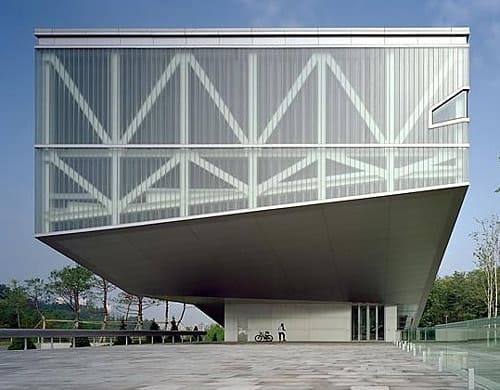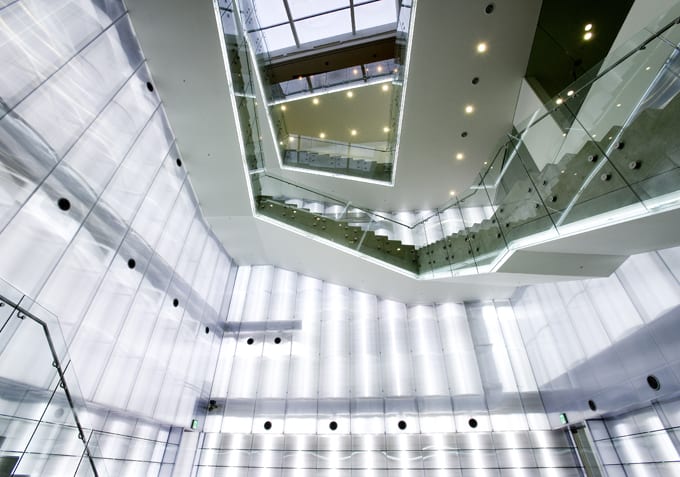Solar and thermal planning for new building is essential in today’s energy market. Home owners and business owners have a vested interest in orienting their buildings – including location of doors, windows and energy creation – to make best use of local daylight and thermal conditions. Of course, this is going to vary from climate to climate, and geographical location. But some things will remain constant.
These include changing of the sun’s angle by season, thermal gain due to sunlight on glass, and the need for shading options during seasons or in locations where strong sunlight is the rule. Locations that have seasons with extremely short daylight hours interspersed with extremely long daylight hours, that have little or no natural shade or that have a great deal of natural shade will require special treatment.
With that said, Danpal building materials have a great deal to offer owners who are erecting new buildings. One viewer, upon seeing the Danpal website with its catalog of transparent, translucent and opaque building panels said, “Hey, look! It is the Earthship concept all grown up and made beautiful!” Indeed, the Danpal materials embrace ideas and research from earlier energy conscious builders.
Facade Materials for Solar and Thermal Planning in New Building
 First of all, there is recognition of the need for façade materials for solar and thermal planning in new building that work efficiently and esthetically. Controlite is a Danpal system of translucent glazing materials with internal louvres that constantly adjust, allowing adjustment to a comfortable, no-glare interior that makes efficient use of natural sunlight. An easy-to-install facade solution is Danpatherm, a factory assembled unit that incorporates excellent thermal properties with tensile strength that can resist wind and dirt penetration. During the day, it functions as a wall panel that emits natural light.
First of all, there is recognition of the need for façade materials for solar and thermal planning in new building that work efficiently and esthetically. Controlite is a Danpal system of translucent glazing materials with internal louvres that constantly adjust, allowing adjustment to a comfortable, no-glare interior that makes efficient use of natural sunlight. An easy-to-install facade solution is Danpatherm, a factory assembled unit that incorporates excellent thermal properties with tensile strength that can resist wind and dirt penetration. During the day, it functions as a wall panel that emits natural light.
Fitted with LED lighting, at night it works as a light box. The combination ensures pleasant lighting at all times. Finally, there are the Danpal translucent façade panels. These combine light weight with tensile strength; weather resistance with ease of installation. They come in a variety of colors and styles, enabling mixing and matching for unique external building designs; in addition, they provide excellent solar and thermal protection, admitting light while blocking harmful UV rays and managing thermal gain.
Combined with a lightweight metal framing system, they are a highly secure means of admitting natural light, and creating an attractive nighttime display of light and color without compromising privacy.
Transparent and Translucent Roofing
Second, Danpal transparent and translucent roofing panels create a constructive, incredibly beautiful answer to the architectural question of how to make skylights – a superb way to get natural lighting into a building – secure and weather resistant. Incorporating the same tough materials and practical building options as the façade materials, Danpal roofing can bring daylight to any room or area that is on the top floor of a building. Furthermore, because it is roofing, rather than an inset window panel, visual interest is achieved by organization and arrangement of the roof supports. For those who would love to look at the stars while falling asleep, without the inconvenience of wind, rain, dust and insects, this is the ideal solution. As for that old movie cliché of falling through the skylight, Danpal roofing systems are designed for a wide variety of weather conditions and are impact resistant.
Shading, for When the Sun is Too Much
 Finally, Danpal panels include shading solutions for solar and thermal planning in new building. Sunlight is marvelous for lighting rooms or even for thermal heating solutions, but there are times when enough is enough, and sunlight simply isn’t welcome. For those areas, Danpal translucent louvered shades are the perfect solution. They can be adjusted by the user, and can be set for a broad variety of effects. They come in a wide range of colors. Their jewel tones are not dissimilar to those of a stained glass window – just not quite as ornate. More importantly for the modern user, the panels can be adjusted to that just-right lighting for a particular interior. They shade without gloom, and admit the right amount of natural daylight for that uplifting feeling that comes only from sunlight.
Finally, Danpal panels include shading solutions for solar and thermal planning in new building. Sunlight is marvelous for lighting rooms or even for thermal heating solutions, but there are times when enough is enough, and sunlight simply isn’t welcome. For those areas, Danpal translucent louvered shades are the perfect solution. They can be adjusted by the user, and can be set for a broad variety of effects. They come in a wide range of colors. Their jewel tones are not dissimilar to those of a stained glass window – just not quite as ornate. More importantly for the modern user, the panels can be adjusted to that just-right lighting for a particular interior. They shade without gloom, and admit the right amount of natural daylight for that uplifting feeling that comes only from sunlight.
The Danpal systems are designed for efficiency, security and beauty. They can be used for basic Frank Lloyd Wright building styles or incorporated into older or newer types of architecture. With these versatile panels, with their wide array of colors, their unique thermal properties and their modern building systems only the builders’ imagination will limit their applications.
 One of the big buzzwords in today’s world is “The Internet of Things.” It seems logical that this phenomenon will move its way to the rooftop, making it a lot easier and effective when integrating rooftop energy into the energy system of the structure as a whole. This means that the roofing materials themselves will play a larger role in how efficient the transfer of thermal energy may be.
One of the big buzzwords in today’s world is “The Internet of Things.” It seems logical that this phenomenon will move its way to the rooftop, making it a lot easier and effective when integrating rooftop energy into the energy system of the structure as a whole. This means that the roofing materials themselves will play a larger role in how efficient the transfer of thermal energy may be.
 When you have
When you have 
